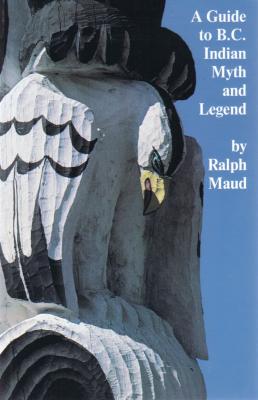A Guide to B.C. Indian Myth and Legend. Ralph Maud
Чтение книги онлайн.
Читать онлайн книгу A Guide to B.C. Indian Myth and Legend - Ralph Maud страница 11
 most fabulous of totem poles to the memory of her brother, confirming her status and freeing herself of Mountain’s power (Barbeau got the pole in 1929!).
most fabulous of totem poles to the memory of her brother, confirming her status and freeing herself of Mountain’s power (Barbeau got the pole in 1929!).
The point is that chiefs live their lives in public, and as storytellers they are also people about whom stories are told. Mountain was undoubtedly a high chief, and at the time Boas came on the scene was ruling his domains augustly. But we now have information on two failures in his life: his retirement as shaman, and his losing against his wife in a notorious “fight with property.” We need not refrain, any more than his contemporaries would, from applying what we know. Here is Chief Mountain telling Boas about the origin of his own clan. The motif of the club which can turn whole towns into forest may be world-wide, but this is how Chief Mountain’s version ends:
The brothers travelled all over the world, and made war on all the tribes, and destroyed them by means of their club. The chief in heaven became angry because they abused his gift, and wished that they might forget the club on one of their expeditions. So it happened that they forgot the club when they went out to attack the town Gulgeu. Therefore the place has been called ever since that time Hwil-dakstsax, or Where-the-club-was-forgotten. Then they went to Demlaxam on Skeena river, where they settled, as they were unable to continue fighting on account of the loss of the supernatural club. Their descendants became the Gisqahast.
If Boas had been present at a communal telling of this origin story, and had known what the audience knew about the storyteller, and had been on the lookout for nuances in tone, and had sought a means to communicate them, we would have had quite a different text before us, I believe. With heroic figures, the public and the private are the same thing; the tribal loss of a supernatural club is the symbolic equivalent of the storyteller’s own.
The 1894 Fort Rupert Potlatch
In the introductory pages of The Social Organization and the Secret Societies of the Kwakiutl Indians (1897) Boas uses some of the material he obtained from Mountain, this time suppressing personal references, even his name. It is tedious to keep repeating how Boas’s need to appear scientific deprives us of the individual quality of the event. This 1897 volume is very close to being the personal document we want of him; a whole section gives a play by play account of “The Winter Ceremonial at Fort Rupert” (pp. 544-606)—“the ceremonial as it actually took place and so far as I witnessed it in the winter of 1895-96.”7 But Boas is so successful in his scientific aim that he manages to tell us what he saw there as though he were the proverbial “camera,” not a human observer. If we want to know how he felt, we have to turn again to the family letters (Rohner pp. 176-189). It would not have done any harm, even in a scholarly work, to indicate just how lucky he was to arrive, without precise expectation, at Fort Rupert in the middle of the winter dance season, and to see in the canoe that came to pick him up none other than George Hunt, whom he had met in 1888 in Victoria and who had been in Chicago for the World’s Fair Exhibition in 1893. It would not have done any harm to take us behind the scenes a little. As the narrative stands in the Social Organization
Конец ознакомительного фрагмента.
Текст предоставлен ООО «ЛитРес».
Прочитайте эту книгу целиком, купив полную легальную версию на ЛитРес.
Безопасно оплатить книгу можно банковской картой Visa, MasterCard, Maestro, со счета мобильного телефона, с платежного терминала, в салоне МТС или Связной, через PayPal, WebMoney, Яндекс.Деньги, QIWI Кошелек, бонусными картами или другим удобным Вам способом.